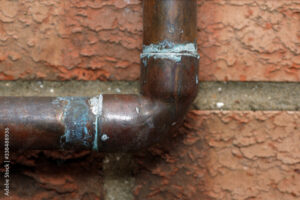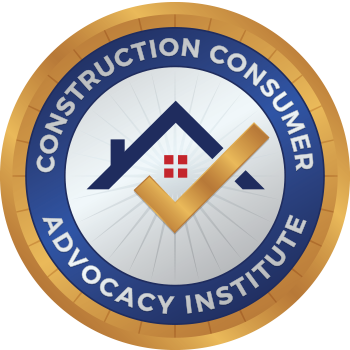
Lead is a material with a long history of use due to its durability, malleability, and resistance to corrosion—qualities that made it popular in plumbing systems. However, over time, we’ve learned that lead can pose serious risks to human health, leading to a ban on its use in plumbing materials in recent years. One such application was lead-based solder, commonly used to join copper pipes. But when exactly did we use it, and what health concerns does it raise?
This blog aims to provide insights into the history, health implications, and modern replacements for lead-based solder in plumbing.
When Was Lead-Based Solder Used in Plumbing?
Lead-based solder was widely used in plumbing systems prior to the late 1980s. Historically, solder made from 50% lead and 50% tin was a go-to material for sealing pipe joints effectively and securely. Its widespread use in the United States continued until 1986 when federal laws began cracking down on lead in plumbing.
The turning point came with the Safe Drinking Water Act (SDWA) Amendments of 1986, which prohibited the use of lead in plumbing systems designed to carry potable water. This was later reinforced by the Reduction of Lead in Drinking Water Act in 2011, which further tightened tolerances for lead to “no more than 0.25% content” across wetted surfaces in plumbing products.
Plumbers working on homes built before the late 1980s may still encounter solder containing lead in older pipe systems, making it important to understand the potential health risks and necessary precautions.
Health Risks Associated With Lead-Based Solder 
Lead contamination poses significant health risks, particularly when it leaches into drinking water. Here’s a closer look at the concerns associated with lead exposure:
1. Impact on the Nervous System
Lead exposure is particularly harmful to the nervous system. It can impair brain development in children, leading to reduced IQ, learning difficulties, and behavioral challenges. Even low levels of exposure can have lasting effects on cognitive functioning.
2. Adverse Effects on Pregnant Women
Expectant mothers are at heightened risk when consuming water contaminated by lead. Lead can cross the placental barrier, exposing the developing fetus to harmful levels. This can result in low birth weight, premature delivery, and damage to fetal brain development.
3. Kidney Damage and Cardiovascular Risks
Chronic lead exposure in adults is linked to kidney damage and increased blood pressure, which can elevate risks for heart disease and stroke over time.
4. General Symptoms of Lead Poisoning
Common symptoms of lead poisoning in both children and adults include fatigue, irritability, abdominal pain, and joint and muscle pain. Prolonged exposure increases the severity of these symptoms.
How Does Lead Leach into Water?
When water flows through pipes soldered with lead-based material, the lead can dissolve into the water, especially if the water is acidic or mineral-heavy. Over time, this leaching process can cause elevated concentrations of lead in a home’s drinking water, posing an invisible yet serious risk.
Signs You May Have Lead Solder in Your Plumbing
If you live in a home built or renovated before 1986, your plumbing system may have lead-based solder or other lead components. Here are signs to look for:
- Year of Construction: Homes built before the late 1980s are most likely to have lead solder in the plumbing.
- Visual Indicators: Lead solder on pipe joints often appears dull gray and soft.
- Metal Testing Kits: DIY metal testing kits are widely available to verify lead content in plumbing fixtures.
What Are the Alternatives?
After the ban on lead in plumbing materials, plumbers adopted safer, lead-free alternatives. The most common solder used today is lead-free solder composed of a mix of tin, copper, silver, or other non-toxic metals. These provide comparable performance without the health risks associated with lead.
Other proactive measures include replacing older pipes and fixtures to ensure compliance with modern safety standards. For homes with older plumbing systems, routine testing of drinking water for lead levels is also highly recommended.
What Should You Do If You Suspect Lead in Your Plumbing?
If you suspect your home’s plumbing system might still contain lead-based solder, take these steps:

- Test Your Water
Have your tap water tested for lead by a certified laboratory. Many state health departments offer guidance on how to collect and submit water samples for analysis.
- Inspect Plumbing Joints
Hire a licensed plumber to inspect the solder and fittings in your plumbing system. They’ll be able to identify any lead-based materials and recommend replacements.
- Consider Pipe Replacement
If your plumbing system still contains lead-based solder or pipes, consider upgrading to lead-free materials. While it can be an investment, the long-term benefits to your health and safety outweigh the costs.
- Use Certified Water Filters
If replacement isn’t immediately feasible, consider installing water filtration systems certified to reduce or eliminate lead. These filters can help protect your household from contaminants in the short term.
Concluding Thoughts
The use of lead in plumbing materials, including solder, is a thing of the past—but its legacy persists in older homes and buildings. The health and safety risks associated with lead exposure cannot be overstated, especially for vulnerable populations. By understanding the history of lead-based solder and taking proactive measures, you can safeguard your family’s health and ensure your plumbing meets today’s safety standards.
If you’re unsure about the state of your home’s plumbing, don’t wait—schedule an inspection today with a licensed plumbing professional to ensure your water is as safe as it can be. Clean water starts with safe plumbing!
For Tons of Great Free Information please hit “Like & Subscribe”
